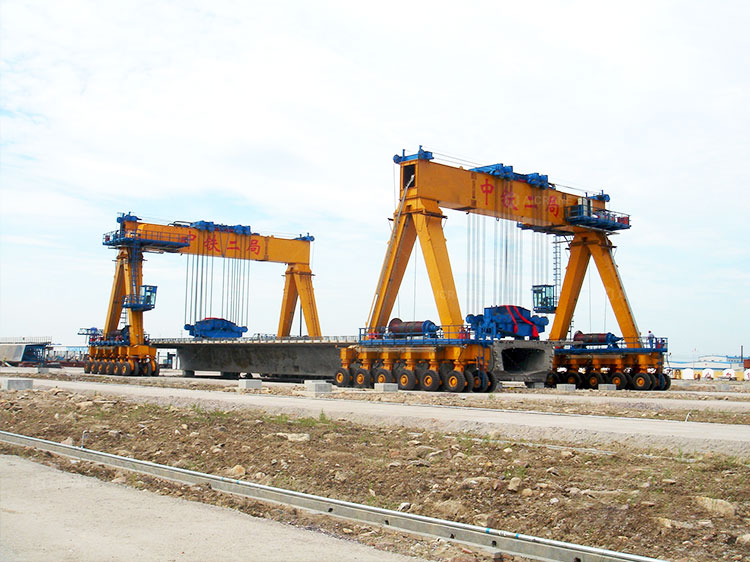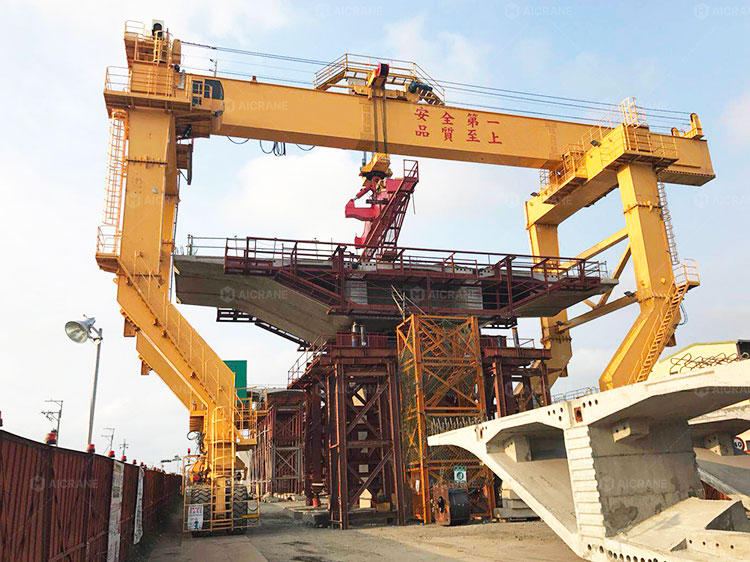The global demand for advanced material handling equipment has been rising steadily, driven by unprecedented investments in infrastructure development projects. Among the many lifting and handling solutions available, Rubber Tyred Gantry (RTG) cranes have seen significant adoption and technological evolution. These highly mobile gantry cranes, widely used in ports, container yards, railway terminals, and industrial yards, are essential for efficiently handling containers and large cargo units. This article explores how infrastructure development projects worldwide are influencing the deployment, design, and demand for RTG cranes, and why they remain a critical part of modern logistics chains.

1. Growing Infrastructure Development: A Global Trend
Infrastructure projects form the backbone of economic growth, with governments and private enterprises investing heavily in transport networks, industrial parks, logistics hubs, and renewable energy facilities. According to industry reports, global infrastructure spending is expected to surpass trillions of dollars annually in the next decade.
Key factors fueling this growth include:
-
Urbanization and population growth: Expanding cities require new roads, bridges, ports, and utilities, generating higher freight and cargo movement.
-
Global trade expansion: Increased demand for containerized cargo handling drives the need for robust port facilities and intermodal terminals.
-
Energy and manufacturing investments: Large-scale power plants, mining projects, and industrial facilities require efficient handling of oversized equipment and heavy cargo.
As infrastructure development accelerates, the need for versatile and high-capacity lifting solutions like rubber tyred gantry cranes becomes even more pronounced.
2. Role of RTG Cranes in Modern Infrastructure
RTG cranes are unique for their mobility, lifting capacity, and adaptability. They are typically used to stack containers in yards or transport heavy cargo in spaces where fixed gantry cranes or rail mounted systems may not be feasible. The ability to move quickly between work areas without requiring fixed rails makes RTGs indispensable for infrastructure projects involving dynamic cargo handling requirements.
Key applications include:
-
Port and container terminal expansion: RTGs are the primary stacking cranes in many container terminals, supporting new deep-sea ports and inland container depots.
-
Railway logistics hubs: As intermodal freight grows, RTGs facilitate container transfers between trains and trucks.
-
Industrial and construction yards: Infrastructure projects often involve the transport of precast concrete segments, steel beams, and heavy machinery that RTGs can handle efficiently.

3. Rising Demand for RTGs Driven by Infrastructure Growth
a) Port Expansion and Modernization
Global trade volumes continue to grow, leading to significant investments in port infrastructure. Countries are expanding existing terminals and building new ones to handle larger vessels and more containers. RTG cranes, with their ability to handle high container volumes in limited spaces, are in high demand.
For example, developing economies in Asia and Africa are investing heavily in new port facilities. RTGs are ideal for these regions because they can be deployed quickly and require minimal fixed infrastructure compared to rail mounted cranes.
b) Development of Inland Logistics Hubs
Infrastructure projects are no longer limited to coastal areas. Inland container depots and logistics hubs play a crucial role in connecting ports with inland markets. RTGs are often the equipment of choice in these facilities because of their flexibility and lower capital expenditure requirements.
c) Support for Mega Construction Projects
Mega projects such as bridges, tunnels, and high-rise developments often involve transporting oversized components. Rubber tyred gantry cranes, especially straddle carriers customized for heavy-duty lifting, are used to move precast concrete sections, girders, and steel structures safely and efficiently.
4. Technological Advancements in RTG Cranes
Infrastructure development projects are not only increasing the number of RTGs in operation but also shaping their technological evolution. Manufacturers are adopting advanced features to meet the growing demands for efficiency, safety, and environmental sustainability.
a) Electrification and Hybrid Systems
Many infrastructure projects, especially those supported by government funding, have strict environmental standards. This has spurred the development of electric and hybrid RTGs that reduce fuel consumption and greenhouse gas emissions. Electrified RTGs also offer lower operating costs and reduced noise levels, which are advantageous in urban projects.
b) Automation and Remote Operation
Automation is becoming more prevalent in large infrastructure projects where labor shortages or safety considerations demand advanced solutions. Semi-automated or fully automated RTGs allow operators to control cranes remotely, improving productivity and reducing human error.
c) Integration with Smart Logistics Systems
Modern infrastructure developments increasingly rely on digital solutions for project management and cargo tracking. RTG cranes now come equipped with GPS, RFID, and IoT-based systems that enable real-time monitoring, predictive maintenance, and seamless integration with terminal operating systems (TOS).
5. Economic Impact on RTG Market
The surge in infrastructure investments has significantly impacted the RTG market’s economic outlook. Industry analysts expect the global RTG crane market to grow steadily over the next decade, driven by both new projects and the replacement of aging equipment.
a) Increasing Competition Among Manufacturers
Rising demand has led to more competition among gantry crane manufacturers. This benefits end-users by driving innovation and providing more cost-effective solutions tailored to specific infrastructure projects.
b) Emphasis on After-Sales Support and Customization
Infrastructure projects often have unique site constraints and operational needs. As a result, manufacturers are focusing on custom-designed RTGs and offering comprehensive after-sales services, including installation, training, and long-term maintenance.
6. Challenges and Considerations
While the growth of infrastructure projects creates numerous opportunities for RTG deployment, several challenges must be addressed:
-
High initial investment: Despite their flexibility, RTGs require significant capital expenditure, which can be a barrier for smaller projects.
-
Skill shortages: Operators and technicians must be trained to handle increasingly sophisticated RTG systems.
-
Space constraints: In dense urban infrastructure projects, maneuvering RTGs can be challenging, necessitating compact designs.
Addressing these challenges through financing solutions, workforce development, and equipment innovation will be key to maximizing the benefits of RTG cranes in infrastructure projects.
7. Future Outlook
The future of rubber tyred gantry cranes is closely tied to the pace and scale of global infrastructure development. As more countries focus on improving logistics networks and building resilient supply chains, RTGs will continue to be an indispensable tool.
Innovations in electrification, automation, and digital integration will further enhance the capabilities of RTGs, making them more efficient and environmentally sustainable. For project developers, investing in modern RTG systems will be essential for meeting the logistical demands of increasingly complex infrastructure projects.
Conclusion
Infrastructure development projects worldwide have a profound impact on the demand, design, and utilization of rubber tyred gantry cranes. These versatile cranes provide the mobility, lifting power, and adaptability necessary for handling diverse cargo in ports, logistics hubs, and construction sites. As infrastructure investment accelerates, RTG cranes will continue to evolve technologically, supporting the efficiency, sustainability, and productivity required in modern projects. For contractors, terminal operators, and project managers, choosing the right RTG crane is no longer a matter of convenience – it is a strategic decision that can significantly influence the success of infrastructure development initiatives.
